Hi Kaarah, I would consider this an emergency. Please get him to the vet.
My dog is panting walking in circles and acting restless and confused and has very bad smell to him
Comments
My dog is panting walking in circles and acting restless and confused and has very bad smell to him
Comments
Ok so this is a little crazy… I never imagined I would see this day, and how I’m having visions of a technological apocalypse. My dog is a video game addict. She literally goes and starts pawing at people’s phones that are left lying about thinking the critters from her game are going to come out to play. I’m 90% decided I shouldn’t let her play anymore because of how much she gets sucked into it. I’m not sure it’s unhealthy but not sure it’s healthy either. Pawbly people what are your thoughts on pet video games and apps like this?
Comments
Hello,
1 of our 2 orphaned newborn kittens (6 days old of age) started eating less the last 12 hours. Before 3 hours I noticed his right front leg was swollen and took him to vet immediatelly. The vet said it might be broken bone or soft tissue injury but she cant tell or do anything before the kitten reaches 3 weeks. I keep the routine of feeding, cleaning + toilet. Is there anything more I should do?
Thank you
Comments
I have an 6 year old ridgeback. she had a hernia op two weeks ago. she got discharged three days after the op with drain. another three days later we took her in for a check up and and her vet wasn’t happy with a hard swelling on her abdomen. he discovered that there was a re-herniation and re-sutured. two days later she developed a seroma. she is still admitted at the veterinary hospital. is this normal healing? i am very worried. When i visit her, she is active and happy, eating well and passing stools and peeing well.
Comments
My bunny’s legs and private area is VERY dirty. Whenever people see her they comment about it. The fur is brownish yellowish and it’s her pee that’s stuck. I was wondering if there’s a way to clean her fur and not have it brown? Preferably not one that involves my bunny anywhere near water? We got her like that and it hasn’t left in the year we’ve had her.
Comments
Comments
My cat was taken in to the vet in May to treat allergies, difficulty breathing (snoring sounds) and a head tilt. Was given an anti inflammatory, antibiotic (convenia), vitamin b-12, ear drops, and an X-ray. Diagnosed with asthma brought on by allergies. Lungs ok. Three weeks later breathing and itching had improved, but third eyelid started showing.
Vet would not see him and said to go to a specialist.
Took the cat for a second opinion. That vet said we should check for nasal polyps. Was sedated and had an exam of ears and throat. No polyps were visible. Vet felt a small enlarged area under the soft palate, but could not confirm this was a polyp. Head tilting stopped after first visit. Recurred a few days ago. Not present now. Second vet recommended going to a specialist for ct scan. It is cost prohibitive and I’m not sure it is necessary. Third opinion from an online site recommended we try antibiotics for the respiratory issues. Started on one antibiotic today for ten days. And started on purina fortiflora.
Looking for any other advice or experience with issues like this. I’ve never had a cat with these problems.
Thanks.
#cats #nasal #headtilt #respiratory #polyps








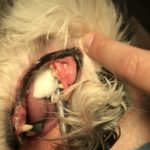
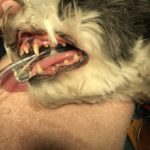
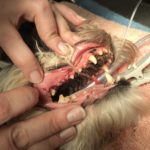


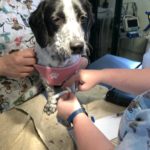

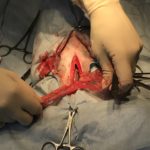
Are there other symptoms that you are aware of? Has your dog been outside too long in the heat? Was your dog running hard for too long? Is your dog eating and drinking? Are they drinking excessively? Is your dog showing signs of pain? If you’re dog was outside today, he may be showing signs of heat exhaustion. If that is the case, keep him calm and inside in air conditioning. Do not let him stress or exert himself for some time- make sure he drinks water. If there is no improvement, a call to the vet is warranted. If your dog was not outside in this hot weather, then I would call the vet right away as it could be something serious. I hope everything is ok.????????
Hello,
I’m sorry but there isn’t enough information here for me to direct you confidently. I am worried about a few things like; seizures, pain, disease, and even benign stuff like anal sacs and ear infection. I think it would be best to call your vet to see if they can take a look at your pup.